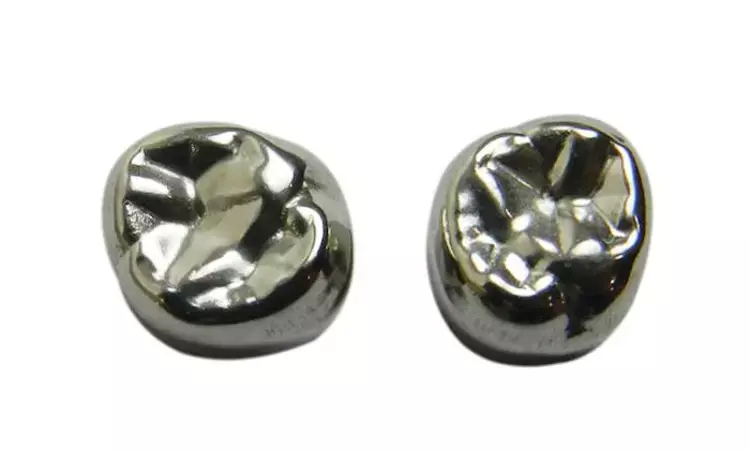- Home
- Medical news & Guidelines
- Anesthesiology
- Cardiology and CTVS
- Critical Care
- Dentistry
- Dermatology
- Diabetes and Endocrinology
- ENT
- Gastroenterology
- Medicine
- Nephrology
- Neurology
- Obstretics-Gynaecology
- Oncology
- Ophthalmology
- Orthopaedics
- Pediatrics-Neonatology
- Psychiatry
- Pulmonology
- Radiology
- Surgery
- Urology
- Laboratory Medicine
- Diet
- Nursing
- Paramedical
- Physiotherapy
- Health news
- Fact Check
- Bone Health Fact Check
- Brain Health Fact Check
- Cancer Related Fact Check
- Child Care Fact Check
- Dental and oral health fact check
- Diabetes and metabolic health fact check
- Diet and Nutrition Fact Check
- Eye and ENT Care Fact Check
- Fitness fact check
- Gut health fact check
- Heart health fact check
- Kidney health fact check
- Medical education fact check
- Men's health fact check
- Respiratory fact check
- Skin and hair care fact check
- Vaccine and Immunization fact check
- Women's health fact check
- AYUSH
- State News
- Andaman and Nicobar Islands
- Andhra Pradesh
- Arunachal Pradesh
- Assam
- Bihar
- Chandigarh
- Chattisgarh
- Dadra and Nagar Haveli
- Daman and Diu
- Delhi
- Goa
- Gujarat
- Haryana
- Himachal Pradesh
- Jammu & Kashmir
- Jharkhand
- Karnataka
- Kerala
- Ladakh
- Lakshadweep
- Madhya Pradesh
- Maharashtra
- Manipur
- Meghalaya
- Mizoram
- Nagaland
- Odisha
- Puducherry
- Punjab
- Rajasthan
- Sikkim
- Tamil Nadu
- Telangana
- Tripura
- Uttar Pradesh
- Uttrakhand
- West Bengal
- Medical Education
- Industry
3D printing with press technique improves fatigue survival of LD crowns

Lithium disilicate monolithic crowns have similar fatigue behaviour in CAD/CAM versus 3D-printing/pressed techniques according to a recent study published in the Journal of Dentistry.
This study aimed to evaluate the adaptation and fatigue behaviour of lithium disilicate glass-ceramic (LD) monolithic crowns produced by the press (combined with 3D-printing) and CAD/CAM milling (control) techniques.
Thirty abutment preparations with a chamfer finish line were produced with a dentin analogue material and scanned with an extraoral scanner. Captured images were processed using CAD software to design a premolar. Blocks of LD were milled using a CAD/CAM system. For the press technique, crowns were first 3D-printed using polymeric material and the heat-pressing protocol was performed. Crowns were adhesively cemented to the abutments and scanned using micro-CT. Files were processed and cross-sectional images were analysed in five measuring points marginal, axial angle, axial, occlusal angle and occlusal. Fatigue test was performed in an MTS universal testing machine (2 Hz, 37°C distilled water) using an anatomic composite piston, following the step-stress method. Failures were detected with an acoustic system and confirmed by transillumination. A cumulative damage-Weibull distribution (95% CI) was used to analyze the fatigue data. Gap thickness data were analyzed using Kruskal-Wallis and Student-Newman-Keuls tests (α=0.05).
Results:
- CAD/CAM milling resulted in larger gap thickness in the occlusal area and smaller gap thickness in the axial angle and axial area than press (p<0.05).
- The probability of failure was similar for crowns produced with CAD/CAM milling and press. The most frequent failure mode was radial crack.
LD crowns produced using the combination of 3D-printing/press technique showed similar fatigue behaviour to CAD/CAM milled control group and resulted in smaller gap thickness at the occlusal region. A more controlled process can be achieved by replacing conventional restoration waxing with 3D printing, which in combination with the press technique produces lithium disilicate glass-ceramic monolithic crowns with good adaptation and high fatigue survival.
Reference:
CAD/CAM versus 3D-printing/pressed lithium disilicate monolithic crowns: adaptation and fatigue behaviour by Rodrigo Ottoni et al. published in the Journal of Dentistry.
https://doi.org/10.1016/j.jdent.2022.104181
Dr. Shravani Dali has completed her BDS from Pravara institute of medical sciences, loni. Following which she extensively worked in the healthcare sector for 2+ years. She has been actively involved in writing blogs in field of health and wellness. Currently she is pursuing her Masters of public health-health administration from Tata institute of social sciences. She can be contacted at editorial@medicaldialogues.in.
Dr Kamal Kant Kohli-MBBS, DTCD- a chest specialist with more than 30 years of practice and a flair for writing clinical articles, Dr Kamal Kant Kohli joined Medical Dialogues as a Chief Editor of Medical News. Besides writing articles, as an editor, he proofreads and verifies all the medical content published on Medical Dialogues including those coming from journals, studies,medical conferences,guidelines etc. Email: drkohli@medicaldialogues.in. Contact no. 011-43720751


